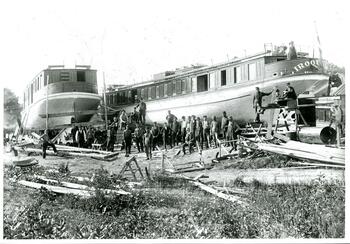Working on the Erie Canal
Collection Owner:
Cover Image:

Building the Steamboat Iroquois in a Boatyard Near Onondaga Lake - Image Source
Collection Facts
Extent:
26
Dates of Original:
c. 1820 - 1930
Browse within this collection
Additional Information
Scope and Content Source:
Browse similar collections
NYH Topic Areas:
Collection Type:



